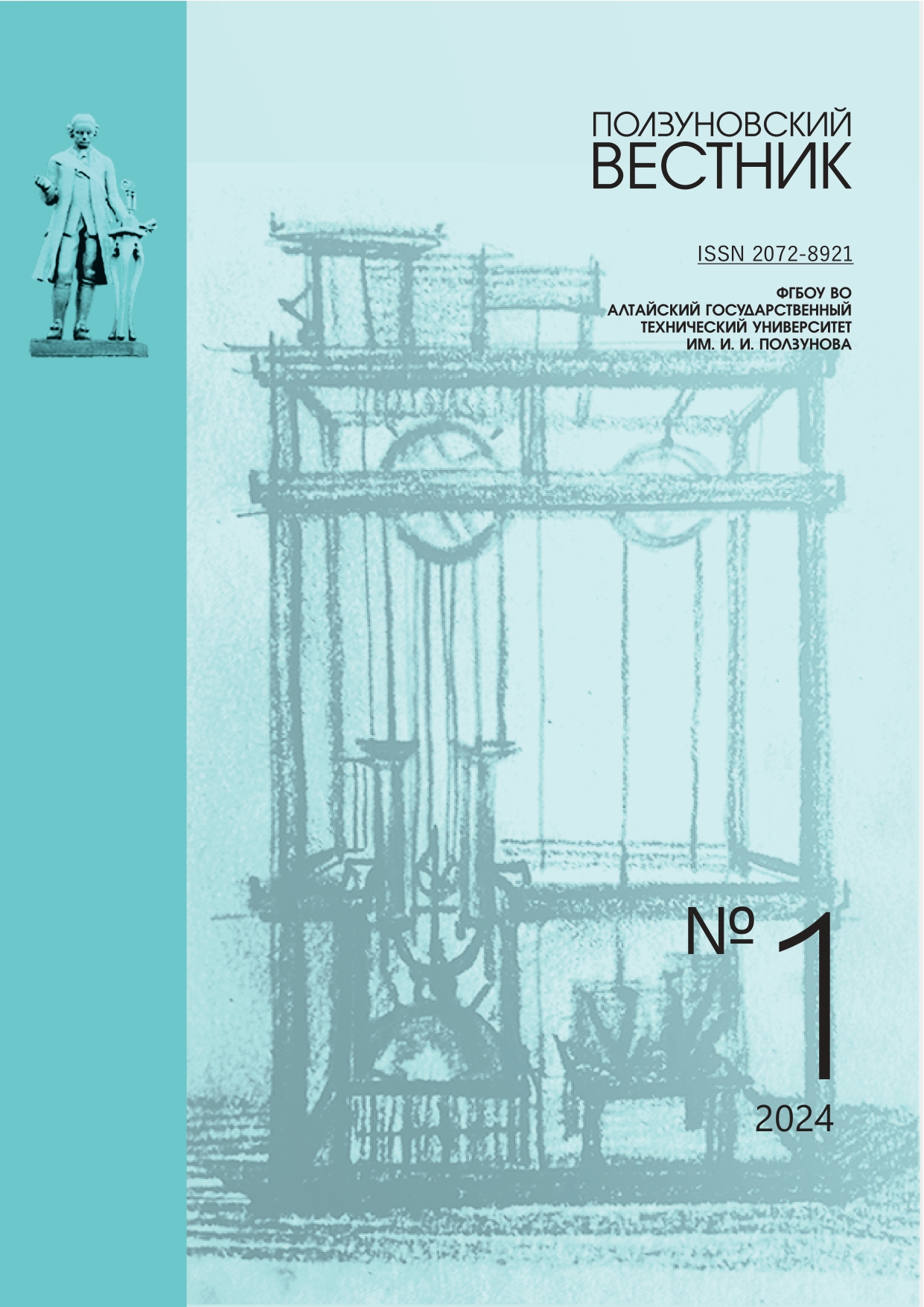NUMERICAL SIMULATION OF THE CAPTURE OF FINE PARTICLES OF A CATALYST BY A SEPARATION DEVICE WITH ARCU-SHAPED ELEMENTS
PGCJVK
DOI:
https://doi.org/10.25712/ASTU.2072-8921.2024.01.019Keywords:
separation device, particle trapping, fine catalyst particles, separation of particles from gas, centrifugal dust collector, cyclone, centrifugal separation, inertial dust collector, numerical simulation of particle motionAbstract
Mechanical destruction of catalyst particles in the fluidized bed significantly shortens their service life and increases operating costs. The processes of crushing and abrasion of catalyst particles depend on many factors and lead to the formation of fine dust, which will be carried out of the reactor by the gas stream. The main problem in production is an insufficiently high degree of purification of flue gas emissions from catalyst dust using cyclones. In the work, the team of authors proposed the design of a separation device with arc-shaped elements and a lattice consisting of many plates. A three-dimensional model of the device is presented. The mechanism of capturing fine particles in it is described. The constructive arrangement of arc-shaped elements in rows relative to each other is noted. The study of the capture of solid dust particles by a separation device with arc-different elements was carried out numerically in the Ansys Fluent software package. During the research, the influence of the flow characteristics of the gas flow, the size of dust particles, the thickness of the arc-shaped elements on the efficiency of the device was studied. It is found that with smaller thicknesses of arc-shaped elements (2-3 mm), the greatest efficiency of the separation device is achieved, since the wave-like structure of the flow is close to ideal. The most optimal velocity of the gas-dust flow at the entrance to the separation device is 0.5-1 m / s. The efficiency of the apparatus is on average 86.5%. The experimental data were processed in similarity criteria, constructing the dependence Eu = f(Re). It is established that during the abrasive abrasion of particles in the quality of the capture apparatus, a separation device with arc-shaped elements can be used, high efficiency with a low pressure drop is achieved by creating an ordered wave-like structure of the gas-dust flow, on the basis of which centrifugal forces of high values arise at relatively low gas velocities at the inlet to the device.
References
Хрисониди В.А., Басманова В.Р. Современные методы регенерации катализаторов, использу-емых в нефтегазовом синтезе // The Scientific Heritage. 2020. № 50-3. С. 41–44.
Collision characteristics and breakage evolution of particles in fluidizing processes / L. Yang [et al.] // Fuel Processing Technology. 2023. V. 243. P. 107654. DOI 10.1016/j.fuproc.2023.107654.
Scala F., Chirone R., Salatino P. 6 - Attrition phenomena relevant to fluidized bed combustion and gasification systems : In Woodhead Publishing Series in Energy, Fluidized Bed Technologies for Near-Zero Emission Combustion and Gasification. Abington : Woodhead Publishing, 2013. P. 254–315. DOI 10.1533/9780857098801.1.254.
Плотникова Н.В. Влияние фрагментации и репликации частиц на молекулярно-массовые ха-рактеристики 1,4-транс-полиизопрена при кратко-временной полимеризации на титан-магниевом ка-тализаторе // Известия Уфимского научного центра РАН. 2020. № 2. С. 35–40. DOI 10.31040/2222-8349-2020-0-2-35-40.
Математическое моделирование изменения фракционного состава катализаторов дегидрирования в реакторе с кипящим слоем / А.Н. Катаев [и др.]. // Катализ в промышленности. 2015. Т. 15. № 3. С. 60–66. DOI 10.18412/1816-0387-2015-3-60-66.
Attrition characteristics of limestone in gassolid fluidized beds / P. Asiedu-Boateng [et al.] // Powder Technology. 2023. V. 419. P. 118342. DOI 10.1016/j.powtec.2023.118342.
Reppenhagen J., Werther J. Catalyst attrition in cyclones // Powder Technology. 2000. V. 113. № 1–2. P. 55–69. DOI 10.1016/S0032-5910(99)00290-9.
Асламов А.А., Асламова В.С., Мартинюк В.В. Замена противоточных циклонов на циклоны ПЦПО в блоке каталитического крекинга установки ГК-3 // Вестник Ангарского государственного технического университета. 2016. № 10. С. 83–86.
Хмелев В.Н., Шалунов А.В., Шалунова К.В. Усовершенствованная конструкция циклона для очистки промышленных газов от дисперсных примесей // Ползуновский вестник. 2009. № 3. С. 104–106.
Влияние конструктивного оформления элементов прямоугольного сепаратора на эффективность очистки газа от твердых частиц / А.В. Дмитриев [и др.]. // Вестник технологического университета. 2018. Т. 21. № 9. С. 58–61.
Dmitriev A.V., Zinurov V.E., Dmitrieva O.S. Collecting of finely dispersed particles by means of a separator with the arcshaped elements // E3S Web of Conferences. 2019. V. 126. P. 00007. DOI 10.1051/e3sconf/201912600007.
Салахова Э.И., Дмитриев А.В., Зинуров В.Э. Исследование структуры газового потока в сепарационном устройстве с дугообразными элементами // Вестник технологического университета. 2022. Т. 25. № 5. С. 60–64. DOI 10.55421/1998-7072_2022_25_5_60.
Пылеулавливающее устройство для блоков дегидрирования парафиновых углеводородов с кипящим слоем катализатора / Э.И. Салахова [и др.]. // Катализ в промышленности. 2022. Т. 22. № 2. С. 57–64. DOI 10.18412/1816-0387-2022-2-57-64.
Numerical simulation of collection efficiency in separator with inclined double-T elements / V.E. Zinu-rov [et al.] // IOP Conference Series: Earth and Envi-ronmental Science. 2022. V. 981(4). P. 042024. DOI 10.1088/1755-1315/981/4/042024.
Downloads
Published
How to Cite
Issue
Section
License
Copyright (c) 2024 Elmira I. Salakhova, Vadim E. Zinurov, Azaliya A. Abdullina, Oksana S.Dmitrieva, Ilnur N. Madyshev, Vyacheslav V. Titenkov

This work is licensed under a Creative Commons Attribution 4.0 International License.















 .
. This work is licensed under a
This work is licensed under a 
